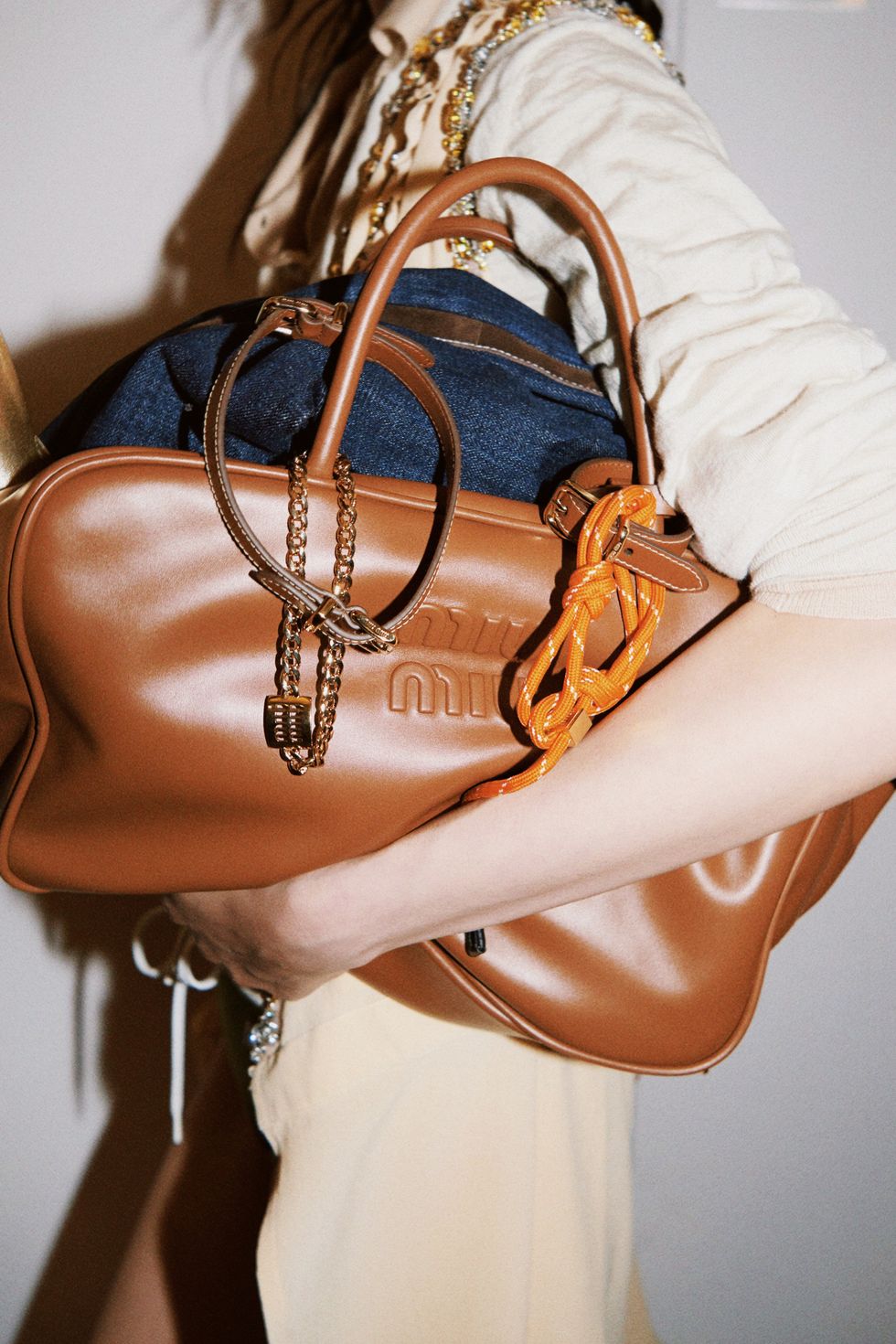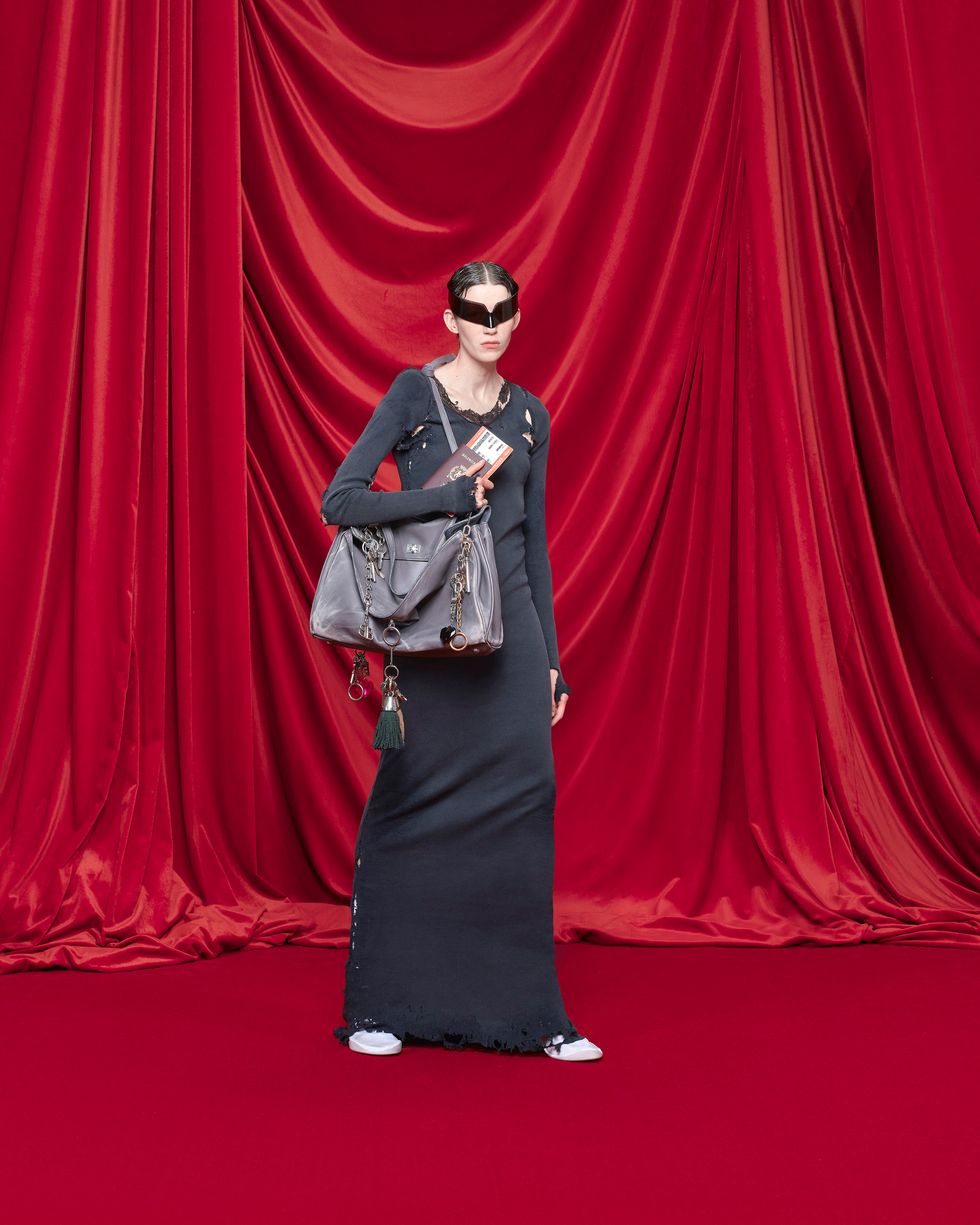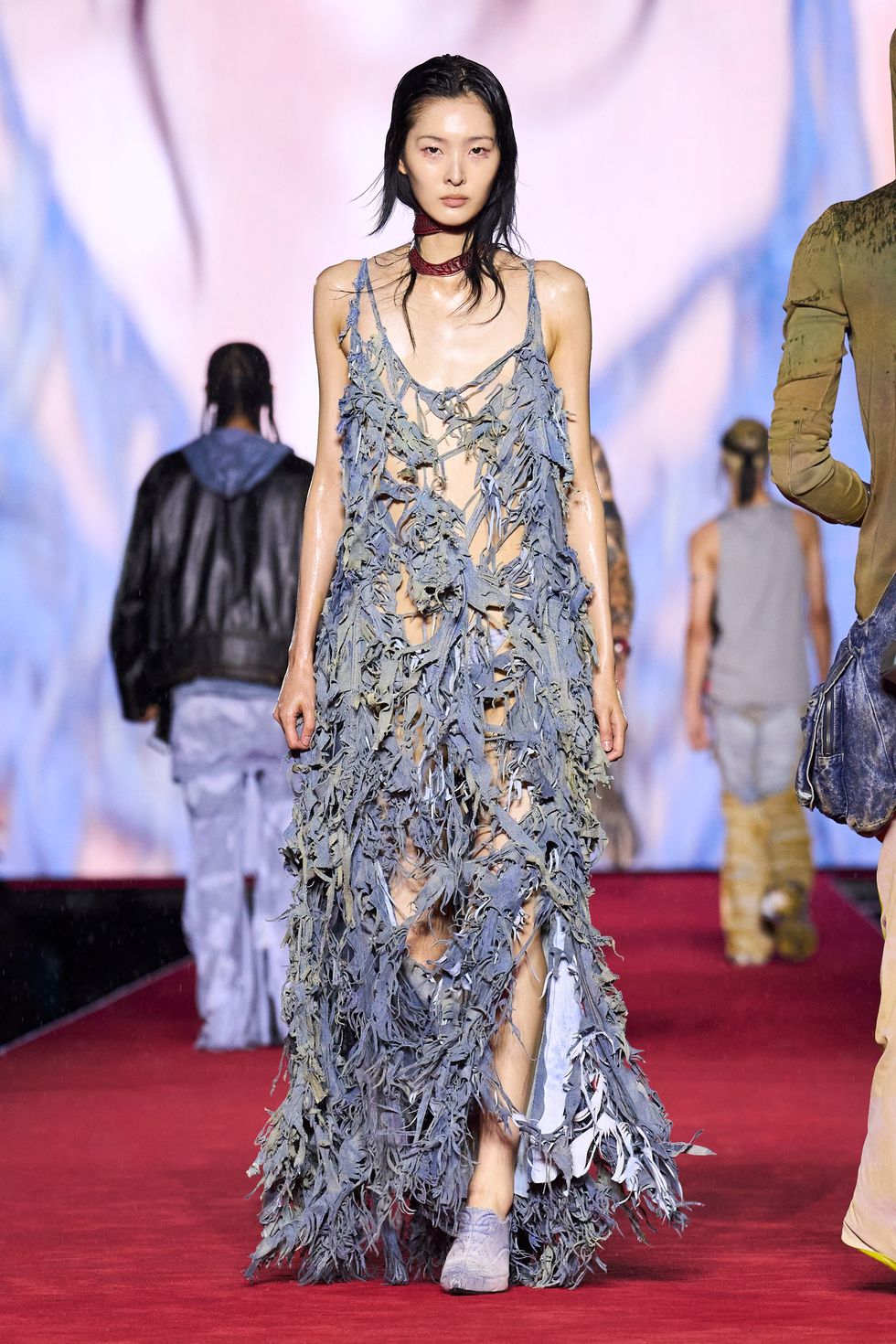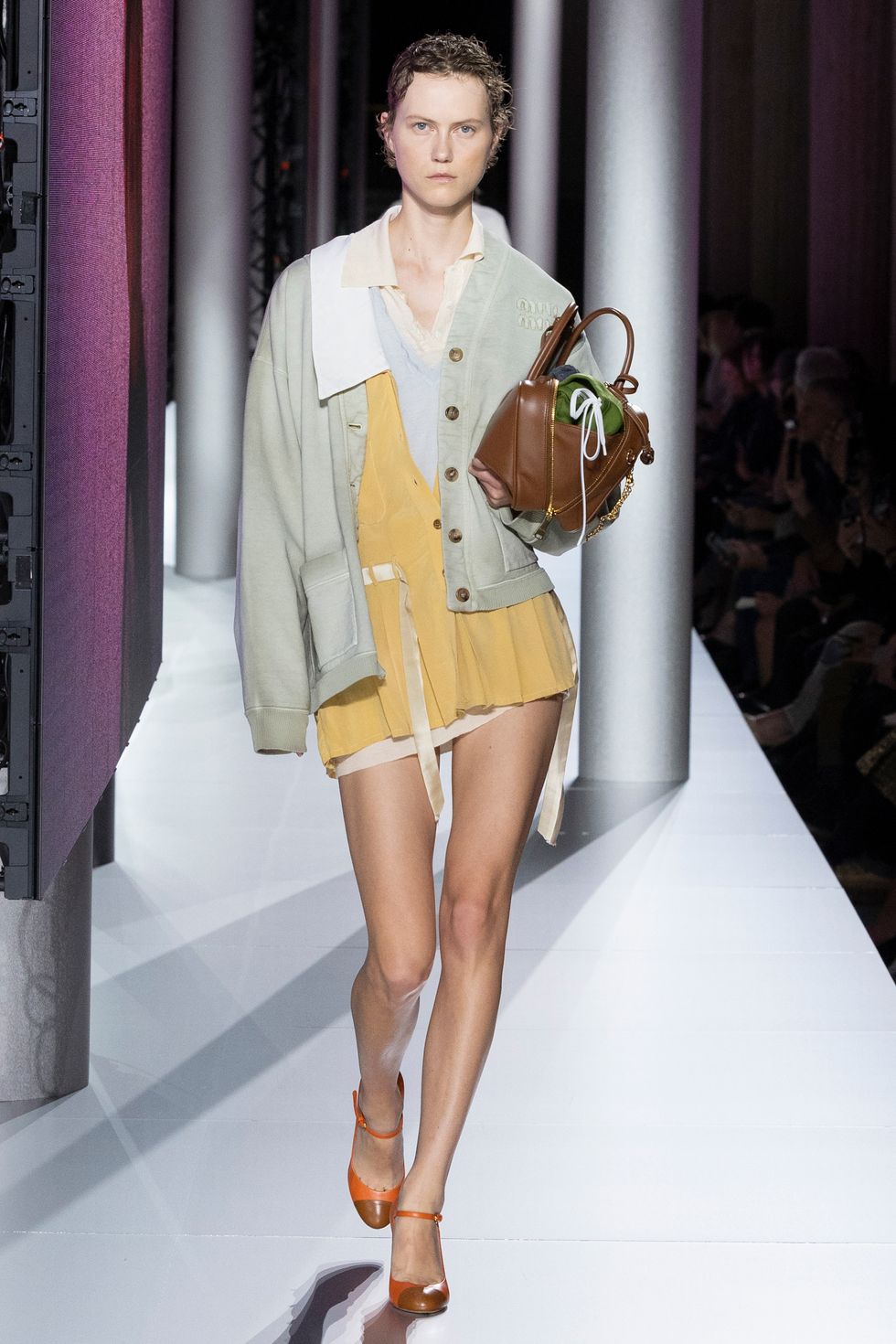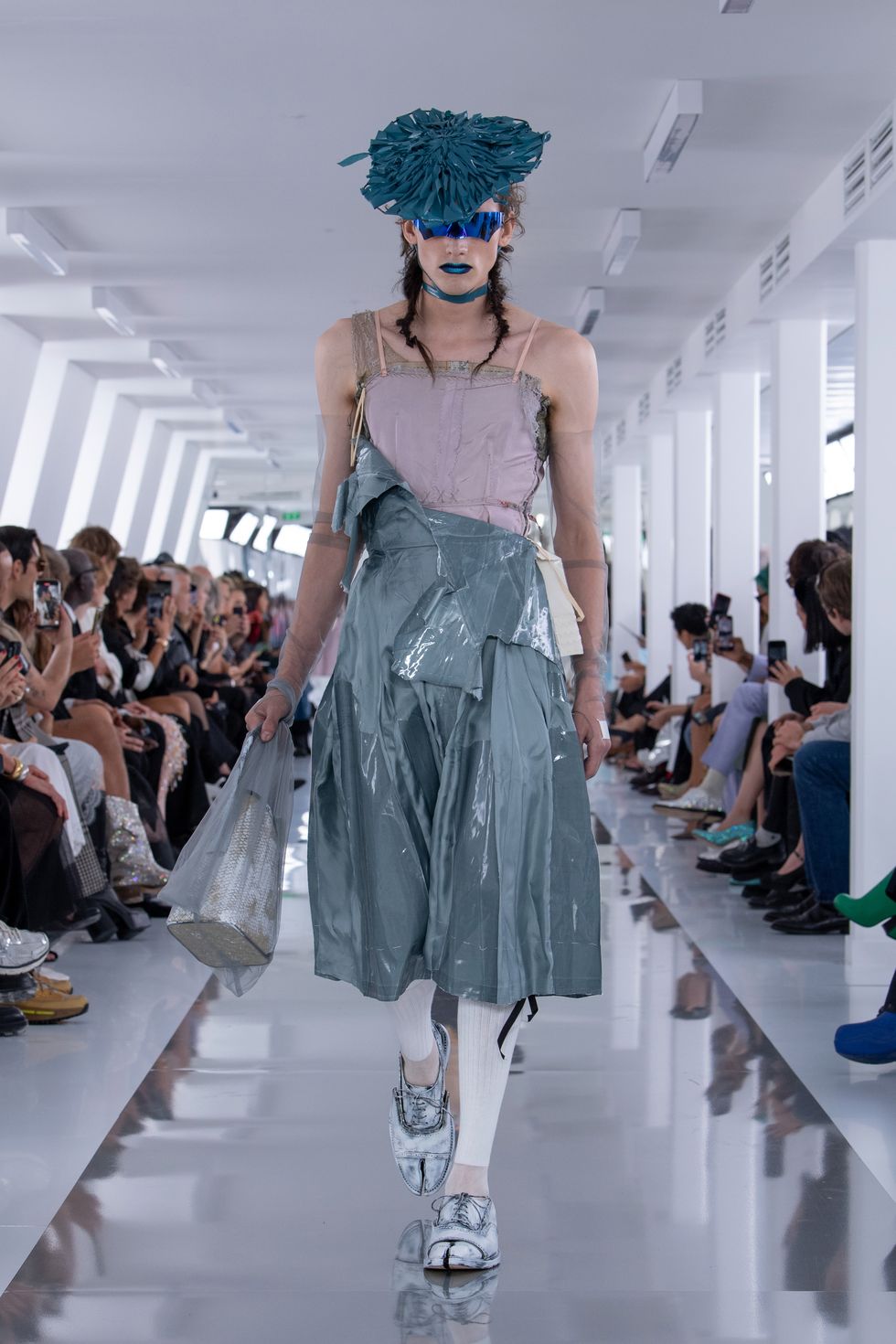Products You May Like
In high school, when I wanted to purchase a T-shirt with holes intentionally perforated throughout, my mother was appalled. I garnered the same reaction when I bought a pair of jeans pre-shredded within an inch of their life, my mother in disbelief: “Why spend money on something that’s so destroyed?”
The allure of imperfection in fashion has been around for decades now, one of the main proponents being Miuccia Prada, who’s been proudly making “ugly-chic” clothes since the ’90s. For spring 2024, it seems that more designers are getting on the same page. The pushback against perfection in fashion, and on social media especially, is giving way to something less refined, with intentionally tousled and even disheveled looks. Miu Miu, styled by Lotta Volkova, featured shirts layered haphazardly over one another and handbags stuffed to the brim with random shoes and trinkets. Or consider Bottega Veneta’s gaping tote bags, filled with papers and other random ephemera, and Maison Margiela’s deconstructed, almost tattered tops, skirts, and dresses, accessorized with hats made out of…cardboard. But why is fashion reverting back to the undone look now?
It generally never bodes well to look back in fashion, but the 2010s could be seen as our decade of decadence. We saw the rise and ubiquity of the Instagram aesthetic—that is, perfectly primped looks to run errands, lest a paparazzo catch you un-made-up. It’s the phenomenon of moving through life to later exist in perfect perpetuity online. Most of the “style icons” of the 21st century exist on a screen, and if you happen to see them in person, you can tell their faces and outfits have been specifically crafted for a camera lens. Virtually every celebrity now has a stylist for everything from red carpets to coffee runs. The looks are tailored to be paparazzi fodder, for Instagrammability, and for easy consumption.
Stripping away artifice and the highly curated personas of Internet-ready fashion brings us back to looks meant for more than just casual viewing. Instead, the wearer is kicking up the rug to invite you to take a look at the mess. This corresponds to the pendulum swing facing the economy and society at large. The excesses of the 2010s were abruptly reined in by the COVID-19 pandemic, then haltingly restarted after our return to “normalcy” following months of social distancing. Now we are in search of something that corresponds to where we actually are. Fashion writer and consultant Camille Charrière makes an apt observation: “We’re actually rushed off our feet and can’t cope with how many things we’ve got going on. We’re back to needing to see a dose of ourselves and stepping away a little bit from the fantasy that fashion likes to represent.” When everyone can buy into a trend of “less is more” that actually demands rigorous upkeep, in the vein of “clean girl makeup” and “quiet luxury,” isn’t it more alluring to go against the grain?
The undone look is something that doesn’t require buying something new, as Charrière notes. “It’s almost like an attitude, and I really like that idea. That’s why I love Lotta’s work so much. It’s more about a philosophy of life, I think, than just the clothes.” When you step out of the house, there’s something almost punk in this day and age about coming as you are. Early proponents of this look include people like Helena Bonham Carter and Lily Allen, embodying a style that’s uniquely theirs, not curated or intended to create discussion. Someone who has chosen radical authenticity more recently—not for clicks or likes, but purely for comfort—is Pamela Anderson, who took Paris Fashion Week by storm sans makeup. It might seem trivial, but the choice shows the germination of a seed of “anti-pretty” that correlates to the runways.
Much like the way Olivia Rodrigo sing-screams about the crippling pressures of performative womanhood and the means of rejecting them, fashion is exposing its aesthetically authentic underbelly. Not to say that showing up as you are is displeasing or wrong, but it’s something we have been taught to edit and perfect. Charrière sums it up best: “Fashion does serve as a way to create a dream and illusion and armor, however you use it. It’s a means of expression. But it’s not going to be able to hide the fact that we, as people, are imperfect.”
This article appears in the March 2024 issue of ELLE.

